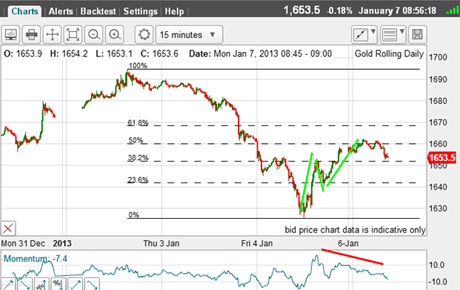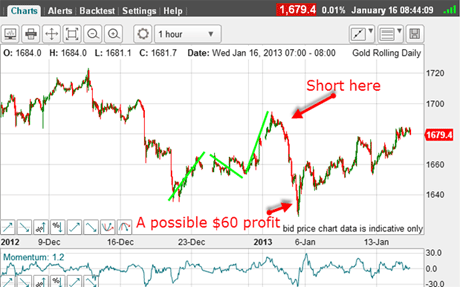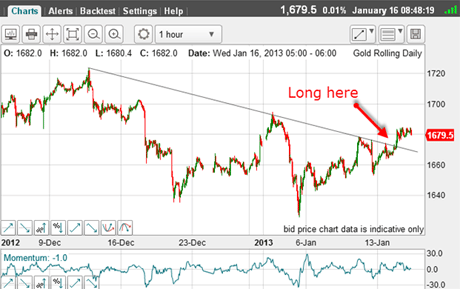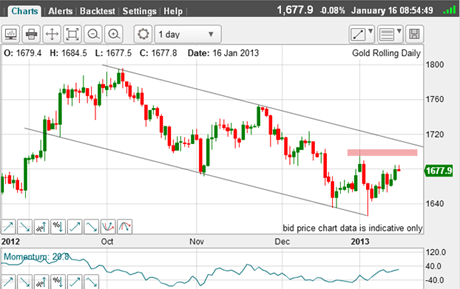Is your trading psychology set for success?
Trader bias is one of the biggest hurdles a trader must overcome, says John C Burford. When it comes to making profits, let the market be your guide.
One of the most overlooked aspects of trading is our own psychology. The question we have to ask ourselves is: do we really understand how to operate in a world of ever-changing values, where markets can often react in the most unexpected way and often confound our expectations?
Many come to trading and spread betting believing it is just like any other field all you have to do is find a great trading system (hopefully, one that runs on your PC), plug it in and hey presto! The profits will simply roll in with minimum effort.
Or there are those that believe if they can read all there has ever been written about a market, they will be able to deduce the next market move. Alternatively they may decide to follow their guru for signs.
Subscribe to MoneyWeek
Subscribe to MoneyWeek today and get your first six magazine issues absolutely FREE

Sign up to Money Morning
Don't miss the latest investment and personal finances news, market analysis, plus money-saving tips with our free twice-daily newsletter
Don't miss the latest investment and personal finances news, market analysis, plus money-saving tips with our free twice-daily newsletter
I must tell you thatall of these approaches are very hazardous!
You must remain flexible
Trading the financial markets is more akin to playing sport. Let's take football, which I played when shorter in the tooth. You can practise all you like to develop your skills, but when on the pitch in a game and the ball comes towards you, it may skid off the grass at a crazy angle. So what is your reaction?
Do you have a plan for when you can control the ball? Did you position yourself to actually receive the pass in the first place?
An opponent comes in to tackle you what do you do?
Of course, all of this occurs in a flash and that is where your instinct comes in. Not only that, but what is your thinking process?
Some players have it and some don't. But you can develop the necessary skills allied to correct thinking.
It's the same in trading. If you haven't been successful, the first place to start working on is your own thinking process your psychology.
In my workshops, I ask each attendee to perform a 'trader test' which can identify the areas that require attention.
One of the main items is trader bias.
One of the most common forms of bias is when you read an analysis of a market, then you become convinced that it has to rally. The case seems so obvious the facts speak for themselves loud and clear. You become wedded to this cause and start counting the profits that are sure to come.
So you will always be looking to go long and recoil with horror at going short.
But we all know that markets do not go up forever, and when the inevitable turn comes, this trader will be zigging when they should be zagging and losing money.
So, if you believe this is you, you will need to develop more flexibility in your thinking. For swing traders like myself, this is a vital quality to have.
Do not get married to a view. Let the market be your guide and never, ever fight it. It is always correct, conspiracy theories aside!
Waiting for the moment of truth
As a current example of flexibility, I have been long-term bearish on gold, but medium-term bullish. And short-term bearish.
To some, that may seem a total contradiction like being married and not, at the same time!
And this is where the correct psychology enters. And a key reason why trading is so different from most other activities.
To show flexibility in action, let's take a look at gold, which I last covered on7 January.
Remember at the time that my rally had carried to $1,695, but then hit a brick wall right at the precise Fibonacci 50% retrace of the decline off the important 25 November high at $1,750.
I was looking for a rally to at least the $1,700 area, but was looking at a short-term decline to trade.
I had a short trade too, remember. This was the position then:

(Click on the chart for a larger version)
But back to the long trade from $1,695. The rally to the Fibonacci 50% (a typical retrace) occurred on a negative momentum divergence, so that was my almost-perfect set-up for a short trade using a close stop.
So how did it develop?

(Click on the chart for a larger version)
From that level, the market collapsed and a profit of $60 was available. Nice.
Remember, I am medium-term bullish, and so a rapid exit was my strategy.
And now the market is approaching my $1,700 target. What do the charts tell me now?
On Monday, I could draw a superb trendline:

(Click on the chart for a larger version)
It contains at least eight touch points, making it a very reliable line of resistance. Breaking it would be of bullish import!
That is why I placed a long trade at the breakout yesterday with my protective stop just inside the trendline.
Typically, after a breakout, the market comes back to kiss the line. When that occurs, this is the moment of truth: either it will react upwards in a scalded cat bounce, or continue declining from the false breakout.
There is no way to adequately forecast which scenario will play out. All we can do is make our trade and set close stops. It is really that simple.
So how does the market look on the daily chart?

(Click on the chart for a larger version)
I have drawn in my long-term tramlines and the market is working its way up to the previous high of 2 January. If the market can make it to the pink zone, my $1,700 target will be in sight.
And that may well be the place I will be looking to be aligned with my long-term bearish view.
If you're a new reader, or need a reminder about some of the methods I refer to in my trades, then do have a look at my introductory videos:
The essentials of tramline trading
An introduction to Elliott wave theory
Advanced trading with Elliott waves
Don't miss my next trading insight. To receive all my spread betting blog posts by email, as soon as I've written them, just sign up here . If you have any queries regarding MoneyWeek Trader, please contact us here.
Get the latest financial news, insights and expert analysis from our award-winning MoneyWeek team, to help you understand what really matters when it comes to your finances.
John is is a British-born lapsed PhD physicist, who previously worked for Nasa on the Mars exploration team. He is a former commodity trading advisor with the US Commodities Futures Trading Commission, and worked in a boutique futures house in California in the 1980s.
He was a partner in one of the first futures newsletter advisory services, based in Washington DC, specialising in pork bellies and currencies. John is primarily a chart-reading trader, having cut his trading teeth in the days before PCs.
As well as his work in the financial world, he has launched, run and sold several 'real' businesses producing 'real' products.
-
 Review: Eden Roc Cap Cana – fun, sun and golf in the Caribbean
Review: Eden Roc Cap Cana – fun, sun and golf in the CaribbeanTravel Eden Roc Cap Cana in the Dominican Republic offers everything from relaxing by the pool to a world-class golf course
-
 Reeves delays cash ISA reform, but savers are not out of the woods yet
Reeves delays cash ISA reform, but savers are not out of the woods yetThe chancellor has reportedly delayed plans to cut the cash ISA limit, which were set to be announced at Mansion House on 15 July, and will take more time to consult with the industry